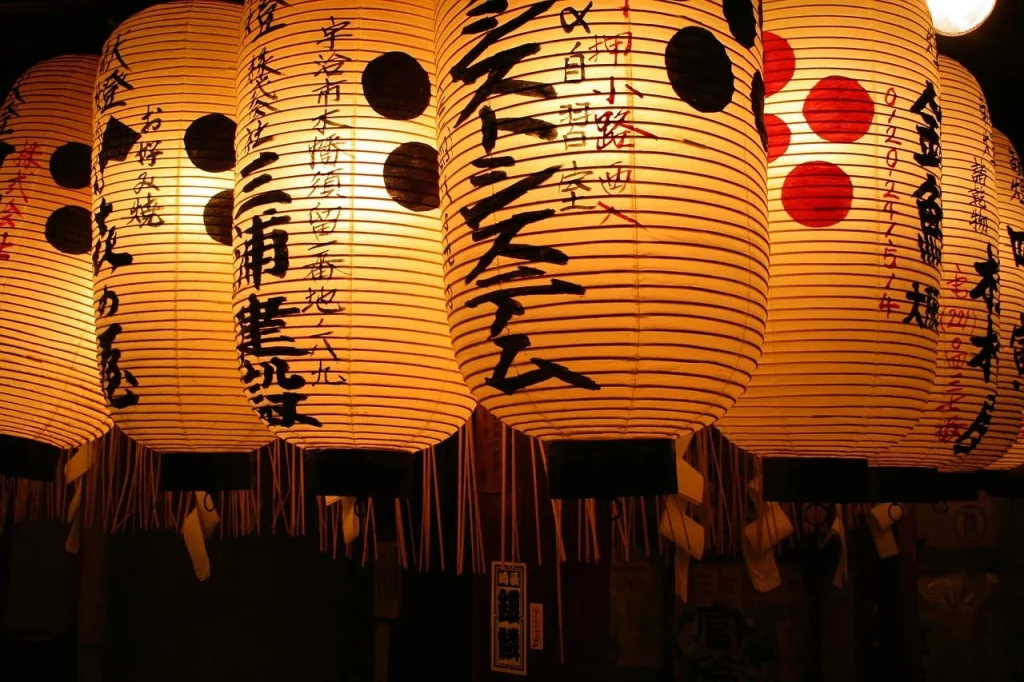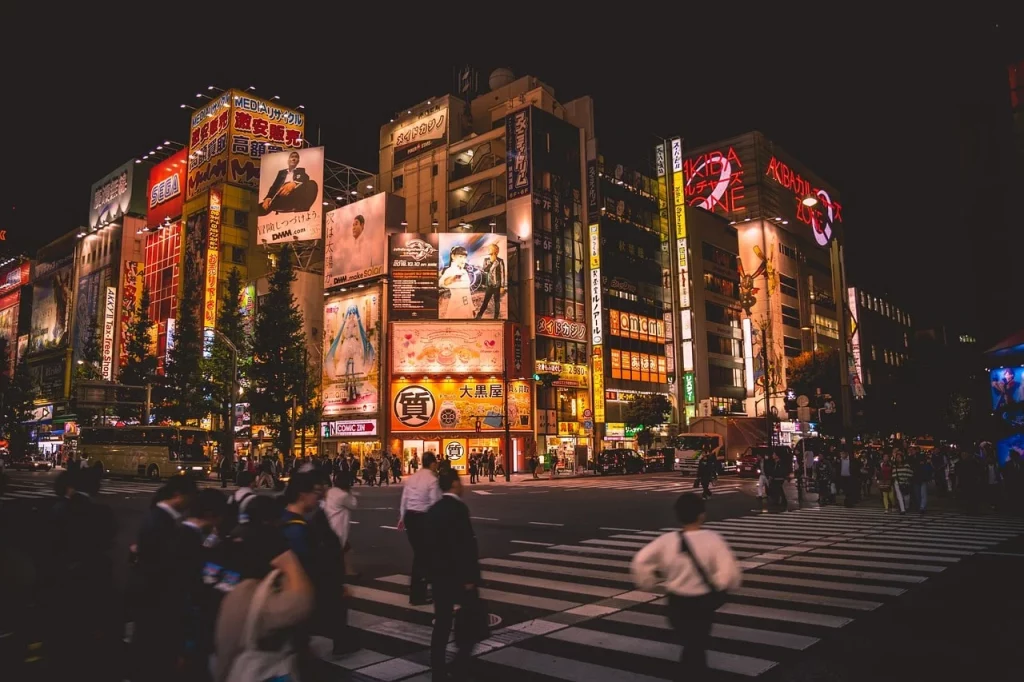Welcome to Tokyo, a city where ancient traditions meet futuristic innovation. It’s a place where you can find robots serving sushi and centuries-old temples nestled between skyscrapers.
I am excited to share some fascinating facts about Tokyo, giving you a taste of its dynamic culture, groundbreaking technology, and spirited people. Whether you’re planning a visit or just dreaming from afar, these facts will transport you to the vibrant streets of Tokyo and show you why it’s a city like no other.
When you look at Tokyo, you see that it’s beyond futuristic; it’s actually something out of your imagination.
Pharrell Williams
Tokyo Facts
Get ready to explore Tokyo. Make sure to pay close attention to every fact presented, as a quiz awaits at the bottom of this article to see if you can claim the title of a Tokyo expert.
- Tokyo wasn’t always the capital; until 1868, that honor belonged to Kyoto.
- The world’s busiest pedestrian crossing is found in Shibuya, with thousands crossing at each light.
- Tokyo Tower, inspired by the Eiffel Tower, is painted in white and international orange to comply with air safety regulations.
- The city has more Michelin-starred restaurants than any other city in the world, making it a gastronomic paradise.
- Ginza district in Tokyo has some of the most expensive real estate on earth.
- Sumo wrestling, Japan’s national sport, has its grand tournaments held in the Ryogoku Kokugikan in Tokyo three times a year.
- Tokyo’s railway system is so punctual that the average delay is measured in seconds.
- The Imperial Palace in Tokyo is built on the site of the old Edo Castle.
- A “Cat Café” phenomenon, where visitors can spend time with cats, originated in Tokyo in 2005.
- The city’s Metro employs a unique system of melodies at each station to signal train departures.
- Hotel rooms in Tokyo can be incredibly small, with some known as “Capsule Hotels” offering just enough space to sleep.
- The Tokyo Skytree is the tallest structure in Japan and offers panoramic views of the metropolitan area.
- Harajuku district is famous for its unique street fashion, drawing style enthusiasts from around the world.

- Tokyo’s fireworks festivals, or Hanabi, are among the most elaborate and beautiful in Japan.
- The Tsukiji Fish Market was the world’s largest wholesale fish and seafood market before moving to the Toyosu Market in 2018.
- Akihabara is known as the electronics and manga/anime district, attracting fans globally.
- The city is prone to earthquakes, but buildings are designed to withstand even the most severe shocks, showcasing advanced engineering.
- In Tokyo, you can find vending machines that dispense everything from live lobsters to lucky charms.
- Shinjuku Station is the world’s busiest railway station, handling over a million passengers each day.
- The Edo-Tokyo Museum offers a glimpse into the city’s past, from the Edo Period to modern times, in interactive exhibits.
- Tokyo has a unique system of addressing based on districts, blocks, and buildings, rather than streets, which can be a puzzle for newcomers.
- Hachiko, the loyal dog, is commemorated with a statue in Shibuya, a testament to friendship and loyalty.
- The city’s underground is not just about subways; there are extensive shopping malls and restaurants located beneath the surface.
- Yoyogi Park becomes a site for music and dance performances on weekends, showcasing Tokyo’s vibrant culture.
- Golden Gai, a small area in Shinjuku, is famous for its nightlife and tiny bars, some of which can only fit a few people at a time.
- Tokyo’s islands, such as Oshima, Toshima, and Aogashima, offer natural beauty and a break from the urban hustle.
- The city’s love for robots is evident in its cafes and hotels, where robots serve as waiters or receptionists.
- The Sumida River Fireworks Festival is one of the oldest and most famous fireworks festivals, dating back to the Edo period.

- In Tokyo, you can experience owl cafes, where customers can interact with owls while enjoying a cup of coffee.
- The Meiji Shrine, dedicated to Emperor Meiji and Empress Shoken, is an oasis of calm in the bustling city.
- Kabuki, a traditional Japanese theater form, can be enjoyed at the Kabuki-za Theatre in Ginza.
- Tokyo Disneyland was the first Disney theme park outside of the United States, opening in 1983.
- The city’s seasonal transformations are celebrated, from cherry blossoms in spring to ginkgo leaves in autumn.
- Roppongi Hills Mori Tower offers an art museum, an observation deck, and a view of Mount Fuji on clear days.
- The annual Sanja Matsuri, one of Tokyo’s three great Shinto festivals, features portable shrines and traditional dance.
- Japanese gardens in Tokyo, such as Rikugien, blend aesthetics with philosophy, offering serene landscapes.
- Tokyo’s river cruises provide a different perspective of the city, from the Sumida River to Tokyo Bay.
- The Ghibli Museum in Mitaka is dedicated to the works of Studio Ghibli, featuring exhibits on films like Spirited Away and My Neighbor Totoro.

- Shimokitazawa is known for its thrift shops and indie culture, offering a contrast to Tokyo’s more polished districts.
- The city’s public baths, or sento, offer a glimpse into a traditional aspect of Japanese culture.
- Tokyo’s architecture is a mix of ultra-modern and traditional, from skyscrapers to historic temples.
- The Tokyo Marathon is one of the world’s largest marathons, attracting runners from around the globe.
- Comiket, the world’s largest comic book fair, is held twice a year in Tokyo, drawing hundreds of thousands of manga fans.
- The Tokyo Metropolitan Government Building offers free observation decks with views of the cityscape.
- J-WORLD Tokyo, an indoor theme park dedicated to anime and manga, showcases Japan’s pop culture.
- The city hosts Robot Restaurant, a unique dining experience featuring robot battles and neon lights.
- Zojoji Temple offers a juxtaposition of ancient architecture against the modern Tokyo Tower backdrop.
- Asakusa is one of Tokyo’s oldest districts, where the atmosphere of the past decades lingers in the streets.
- The Setagaya Hachimangu Shrine hosts an annual autumn festival featuring a traditional horseback archery event known as Yabusame.
- In Tokyo, you can find the Tokyo Metropolitan Teien Art Museum, a rare example of Art Deco architecture in Japan, surrounded by beautifully landscaped gardens.
Tokyo Myths

Now that we’ve explored all these fun facts about Tokyo, it’s time to venture into the realm of myths. Let’s separate truth from fiction as we delve deeper into the stories surrounding this vibrant city.
- Tokyo Is Constantly Crowded Everywhere
It’s often believed that every corner is brimming with people. In reality, while certain areas like Shibuya Crossing and Shinjuku Station experience immense foot traffic, numerous neighborhoods offer peaceful retreats. Places like Kichijoji and Nippori manifest a more tranquil side of Tokyo life. - Tokyo Is Prohibitively Expensive
The notion that living in or visiting Tokyo will drain one’s finances isn’t entirely accurate. It’s true that certain aspects, like housing and some entertainment options, can be pricey. However, affordable dining, transportation, and attractions are plentiful, making budget-friendly experiences very much possible. - Only Sushi and Ramen Are Worth Eating
Tokyo’s culinary scene is often reduced to just sushi and ramen. However, the city’s food landscape is incredibly diverse. From street food to Michelin-starred restaurants, it offers an array of dishes, including yakitori, tempura, and unique fusion cuisine, showcasing the city’s vast culinary expertise. - Tokyo Is All About Futuristic Technology
While it is renowned for its cutting-edge technology and modernity, the city beautifully preserves its rich history and traditions. Temples, shrines, and historical districts like Asakusa coexist with skyscrapers and neon lights, offering a balanced glimpse into Japan’s past and future. - English Is Widely Spoken
There’s a common belief that English is widely spoken in Tokyo. In practice, while English signage is common on public transportation and major tourist spots, the average resident might not be fluent in English. Efforts to learn basic Japanese phrases are appreciated and can enhance the travel experience.
No products found.
Tokyo Quotes

To truly understand this city, let’s delve into the words of those who have been captivated by its magic. Below is a list of my favorite quotes:
Tokyo was an origami city folded over and over until something was made of virtually nothing.
Tara Bray Smith
Tara Bray Smith describes Tokyo as a meticulously crafted metropolis, likening its dense, intricate layout to the art of origami.
Tokyo is too close up to see, sometimes. There are no distances and everything is above your head – dentists, kindergartens, dance studios.
David Mitchell
David Mitchell captures the overwhelming closeness and vertical complexity of Tokyo, where life unfolds in layers upon layers.
I have been to Tokyo many times, but I still get lost. That’s the beauty of it, it’s an endless adventure.
Dakota Fanning
Dakota Fanning shares her enchantment with Tokyo’s vastness and complexity, viewing its navigational challenges as part of its charm.
In Tokyo, they were so serious about fashion that they would file past me like warriors, completely decked out in their fashion regalia.
John Galliano
John Galliano admires Tokyo’s intense fashion scene, depicting its stylish inhabitants moving with a warrior-like precision and dedication.
Tokyo is not just a city; it’s a world unto itself.
José Parlá
José Parlá captures the essence of Tokyo as more than just a city; it is a vast, self-contained world with its own unique rhythm and life.
Tokyo FAQ

As we transition from the inspiring quotes, we’re now entering the final stretch before the engaging trivia. Pay close attention to the upcoming FAQ section, as it’s your key to acing the quiz.
- Which Tokyo airport is bigger?
Narita Airport is the bigger of Tokyo’s two major airports. It primarily handles international flights and is located further from central Tokyo than Haneda Airport, which is closer and handles both domestic and international flights. - Can Tokyo be hit by a tsunami?
Yes, it can be at risk of a tsunami, particularly in coastal areas. However, Tokyo Bay’s unique geography and extensive sea walls and flood gates significantly reduce the risk and potential impact compared to other regions. - Are Tokyo and Kyoto the same?
Not at all! Tokyo and Kyoto are two distinct cities in Japan. Tokyo is the bustling capital and a modern metropolis, while Kyoto is known for its historic temples, traditional tea houses, and centuries-old craftsmanship. They represent the fascinating contrast between modern and traditional Japan. - What’s the best time to visit Tokyo?
The best times to visit are spring (March to May) for the cherry blossoms and autumn (September to November) for the colorful foliage. These seasons offer mild weather and scenic beauty, making them ideal for exploring the city. - What are the must-visit places in Tokyo?
Some must-visit spots include the historic Asakusa district with the Senso-ji Temple, the bustling streets of Shibuya and Shinjuku, the serene Meiji Shrine, and the fashionable districts of Harajuku and Omotesando. Don’t forget to explore some of Tokyo’s world-class museums and galleries, too!
No products found.
Tokyo Trivia

Welcome to the ultimate Tokyo trivia. Get all your questions wrong, and you’ll find yourself being chased by an imaginary Godzilla through the alleys of Akihabara. Good luck!
Conclusion
Tokyo stands as a testament to resilience, innovation, and tradition. Walking its streets, one can’t help but feel energized by the dynamic pulse of the city. It’s a place where ancient temples stand proudly among modern marvels, each telling its own story of the past, present, and future.
It reminds us that life is a beautiful blend of contrasts, and embracing them is the key to a rich experience. Till next time, stay curious and explore more. Cheers.


